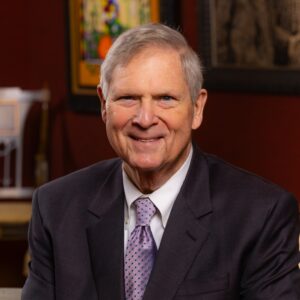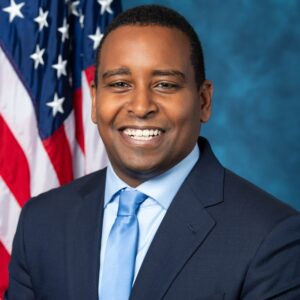Collaboration, Public Engagement at the Heart of Pandemic and Disaster Preparedness and Response
Keystone has partnered with government agencies, communities, and stakeholders for over 15 years to develop planning and response strategies for disruptive events like natural disasters and pandemics. Our work has:
- Informed the federal response to the H1N1 pandemic;
- Identified lessons learned from the response to the Ebola outbreak at the state and local level;
- Strengthened preparedness for a range of terrorist attack scenarios and natural disasters;
- Helped identify needs of the Strategic National Stockpile; and
- Guided plans for allocating scarce resources during a public health emergency.
Preparing for and responding to widespread public health emergencies requires skilled collaboration between sectors, disciplines, organizations, and cultures that transcends jurisdictions and traditional boundaries. It also takes learning from previous health and natural disasters to shape policy, inform recommendations, and build or strengthen partnerships between organizations and individuals working on the front lines to keep our society as safe as possible. Keystone draws on its deep experience to help leaders and policymakers in every field gather data, engage with stakeholders, and build agreement for system-level changes to improve resilience for future crises.
Keystone Pandemic and Disaster Planning and Response Initiatives
Infection Control Assessment and Outbreak Response Following Ebola
Keystone partnered with the Association of State and Territorial Health Officials (ASTHO) and the Centers for Disease Control (CDC) and Prevention following the Ebola outbreak of 2014-2016 to identify best practices and valuable implementation steps for robust infection control assessment and response plans. Keystone initiatives developed strategies for responding to infectious disease incidents that culminated in a report providing guidance at the national, regional and state levels, as well as state-specific action plans.
H1N1 Public Engagement
Keystone partnered with the Centers for Disease Control (CDC) to develop guidance for local, state, federal and private health organizations as the agency decided how to meet the challenge of the H1N1 virus in the fall and winter flu season of 2009-2010. Keystone engaged the general public through meetings and web engagements, as well as with key stakeholders to inform CDC staff about how to respond to a potential H1N1 pandemic. A final report on the initiative is available here.
Zika and Vector Control – Los Angeles County
The emergence of the Zika virus in 2016 underscored the importance of vector control. The Keystone Policy Center partnered with Los Angeles County during this time to examine strategies informing local responses to the Zika virus and gather information analyzing community preferences for various mosquito control techniques. The workshops resulted in a report advising Los Angeles County’s vector control approach, planning, and communications, as well as public health planning and response activities related to vector borne illnesses.
Emergency Preparedness for Anthrax
Keystone was sought out by the Division of Medical Countermeasure Strategy and Requirements in the Office of the Assistant Secretary of Preparedness and Response at the U.S. Department of Health and Human Services (MCSR/ASPR/HHS) to partner with the Seattle and King County Department of Public Health to gain direct public input on medical countermeasure distribution and dispensing in the metropolitan Seattle area. The engagement informed investment in medical countermeasures and emergency preparedness policy, especially in preparation against an intentional, mass casualty anthrax event, which is detailed in the following report.
CDC State Pandemic Influenza Planning – Nebraska and Minnesota
Keystone led concurrent state processes in Nebraska and Minnesota on pandemic influenza response. Keystone helped Nebraska developed recommendations for state policy and a memorandum of agreement on roles and responsibilities among state, county, and tribal health officials by examining interactions and responsibilities between tribal communities and the state. In Minnesota, Keystone investigated what factors would need to be considered should the state need to contemplate whether to ration scarce medical treatment resources in a pandemic event.
Developing Guidelines for Mass Casualty Medical Management
Keystone worked with the Assistant Secretary for Preparedness and Response (ASPR) Medical Utilization and Response Integration Branch, Division of Medical Countermeasure Strategy and Requirements to develop clinical practice guidelines for mass casualty medical management of injury or disease resulting from a national security incident. It was one of multiple projects Keystone completed for ASPR examining the needs of medical countermeasure end-users such as medical providers, public health departments, and pharmacies in the event of an emergency.
Pandemic Preparedness – Harris County, Texas
Keystone advanced shared plans and outlined roles and responsibilities for more than 100 community partners responding to a flu pandemic in Harris County, Texas. Keystone engaged nearly 800 community members by leading eight public meetings, a meeting with community-based organizations, and a meeting with agency partners. A summary report and an evaluation report of the initiative are available.
Pandemic Planning in New York for Vulnerable and At-Risk Populations
Keystone helped New York outline local priorities for medical resources during a public health crisis. The initiative saw Keystone engage community members and lead site meetings throughout the state between 2007-2008 to inform the state’s policies.
ASTHO Pandemic Planning for At-risk Populations
Keystone helped the Association of State and Territorial Health Officials (ASTHO) develop pandemic planning for at-risk populations throughout the country, which is detailed in the following report. Keystone engaged at-risk populations, caretakers and stakeholders to examine meeting the needs to support at-risk populations during a public health crisis.


 Effective March 1, 2025, Thomas J. Vilsack, former United States Secretary of Agriculture and Governor of Iowa, became the first Chief Executive Officer for the World Food Prize Foundation. In this new role, Governor Vilsack is focusing on expanding the Foundation’s global network, and will further position the Foundation as a leader in addressing global food and nutrition insecurity, continuing his lifetime of public service.
Effective March 1, 2025, Thomas J. Vilsack, former United States Secretary of Agriculture and Governor of Iowa, became the first Chief Executive Officer for the World Food Prize Foundation. In this new role, Governor Vilsack is focusing on expanding the Foundation’s global network, and will further position the Foundation as a leader in addressing global food and nutrition insecurity, continuing his lifetime of public service. Shelby Coffey III is a distinguished journalist, media executive, and thought leader whose career has helped shape the landscape of American news and public discourse. Over several decades, Coffey has held some of the most influential roles in journalism, including serving as editor of the Los Angeles Times, executive vice president of ABC News, and deputy managing editor of The Washington Post. His editorial leadership extended to key roles as president of CNN Financial News, editor of the Dallas Times Herald, and U.S. News & World Report.
Shelby Coffey III is a distinguished journalist, media executive, and thought leader whose career has helped shape the landscape of American news and public discourse. Over several decades, Coffey has held some of the most influential roles in journalism, including serving as editor of the Los Angeles Times, executive vice president of ABC News, and deputy managing editor of The Washington Post. His editorial leadership extended to key roles as president of CNN Financial News, editor of the Dallas Times Herald, and U.S. News & World Report. Jerry Steiner has spent 40 years involved in agriculture following growing up on a Wisconsin dairy farm. He began his career with Monsanto, in multiple business leadership roles. From 2003-2013 he served as a member of the Executive team, as the company’s Executive Vice President of Sustainability and Corporate Affairs. He led the company’s global Government, Public and Industry Affairs teams across the 70 countries where Monsanto conducts business. This experience got Jerry connected to the Keystones centers work in agriculture. Key among his responsibilities were shaping the company’s public policy and building partnerships aimed at helping farmers around the world produce more food, while conserving valuable resources like water and energy. Two unique partnership that developed under his leadership were drought tolerant corn with 5 African countries, CIMMYT and the Gates foundation, and a building a sustainable business model in Brazil with the value chain leading to significant multi-company investment and soybean varieties that can protected themselves.
Jerry Steiner has spent 40 years involved in agriculture following growing up on a Wisconsin dairy farm. He began his career with Monsanto, in multiple business leadership roles. From 2003-2013 he served as a member of the Executive team, as the company’s Executive Vice President of Sustainability and Corporate Affairs. He led the company’s global Government, Public and Industry Affairs teams across the 70 countries where Monsanto conducts business. This experience got Jerry connected to the Keystones centers work in agriculture. Key among his responsibilities were shaping the company’s public policy and building partnerships aimed at helping farmers around the world produce more food, while conserving valuable resources like water and energy. Two unique partnership that developed under his leadership were drought tolerant corn with 5 African countries, CIMMYT and the Gates foundation, and a building a sustainable business model in Brazil with the value chain leading to significant multi-company investment and soybean varieties that can protected themselves. Jennifer Morris is the Chief Executive Officer of The Nature Conservancy, leading a team of nearly 6,000 staff working in more than 80 countries and territories tackling the dual crises of the
Jennifer Morris is the Chief Executive Officer of The Nature Conservancy, leading a team of nearly 6,000 staff working in more than 80 countries and territories tackling the dual crises of the  Congressman Joe Neguse represents Colorado’s 2nd District in the U.S. House of Representatives. He was elected to his first term in November 2018, becoming the first Black Member of Congress in Colorado history. In December 2022, Rep. Neguse was elected by his colleagues to serve as Chair of the Democratic Policy and Communications Committee (DPCC), becoming the first Coloradan to serve in a senior elected leadership role in the House in over 85 years. He serves on the Natural Resources and Judiciary Committees, and was also appointed by House Minority Leader Hakeem Jeffries to serve as one of four Democrats on the prestigious Rules Committee. Rep. Neguse serves as Ranking Member on the House Subcommittee on Federal Lands, which he previously Chaired in the 117th Congress.
Congressman Joe Neguse represents Colorado’s 2nd District in the U.S. House of Representatives. He was elected to his first term in November 2018, becoming the first Black Member of Congress in Colorado history. In December 2022, Rep. Neguse was elected by his colleagues to serve as Chair of the Democratic Policy and Communications Committee (DPCC), becoming the first Coloradan to serve in a senior elected leadership role in the House in over 85 years. He serves on the Natural Resources and Judiciary Committees, and was also appointed by House Minority Leader Hakeem Jeffries to serve as one of four Democrats on the prestigious Rules Committee. Rep. Neguse serves as Ranking Member on the House Subcommittee on Federal Lands, which he previously Chaired in the 117th Congress. Llewellyn King was born in Southern Rhodesia, now Zimbabwe. He went into journalism as soon as he turned 16, stringing for Time magazine and United Press in Africa.
Llewellyn King was born in Southern Rhodesia, now Zimbabwe. He went into journalism as soon as he turned 16, stringing for Time magazine and United Press in Africa. Steven Williams is the Chief Executive Officer of PepsiCo North America, overseeing a more than $48 billion business that spans PepsiCo’s Foods and Beverage operating units. His leadership encompasses more than 125,000 associates and over 900 locations across the U.S. and Canada. Steven joined PepsiCo in 2001 as part of PepsiCo’s acquisition of the Quaker Oats Company, which he joined in 1997, and has held leadership positions of increased responsibility since.
Steven Williams is the Chief Executive Officer of PepsiCo North America, overseeing a more than $48 billion business that spans PepsiCo’s Foods and Beverage operating units. His leadership encompasses more than 125,000 associates and over 900 locations across the U.S. and Canada. Steven joined PepsiCo in 2001 as part of PepsiCo’s acquisition of the Quaker Oats Company, which he joined in 1997, and has held leadership positions of increased responsibility since.